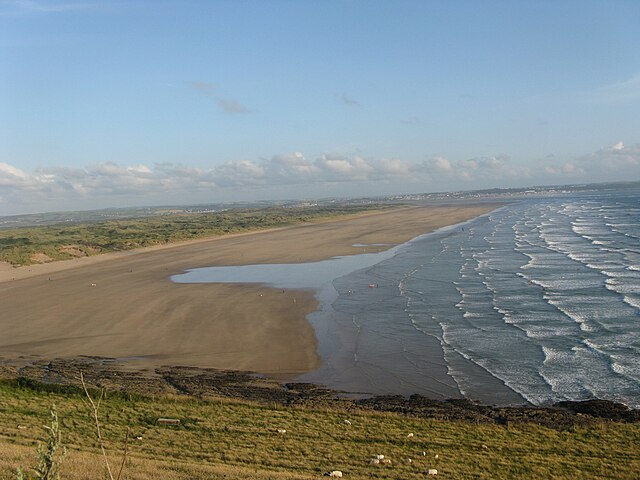Climate of south-west England
The climate of south-west England is classed as oceanic (Cfb) according to the Köppen climate classification. The oceanic climate is typified by frequent cloudy skies, cool winters with cool summers and precipitation all year round, with more experienced in winter. Annual rainfall is about 1,000 millimetres (39 in) and up to 2,000 millimetres (79 in) on higher ground. Exceptions include areas to the east of high ground ( e.g. Exeter / parts of West Somerset that are subject to a rain shadow effect and annual rainfall is closer to 30 inches.
In June 1925, Pendennis Point (castle pictured) recorded the most monthly sunshine in the south-west.
During February 2009, the area around Okehampton, Dartmoor, received 55 cm (22 in) of snow accretion.
Carland Cross Wind Farm, Cornwall
Rising temperatures could lead to citrus cultivation
Saunton Sands is a beach near the English village of Saunton on the North Devon coast near Braunton, popular for longboard surfing. Beyond its southern end, Crow Point, England is the mouth of the River Taw estuary. It is part of the Taw-Torridge estuary Area of Outstanding Natural Beauty and is at the centre of the UNESCO-designated North Devon's Biosphere Reserve, where Braunton Burrows lies at the heart.
Saunton Sands
A RAF C-130K Hercules landing at Saunton Sands






